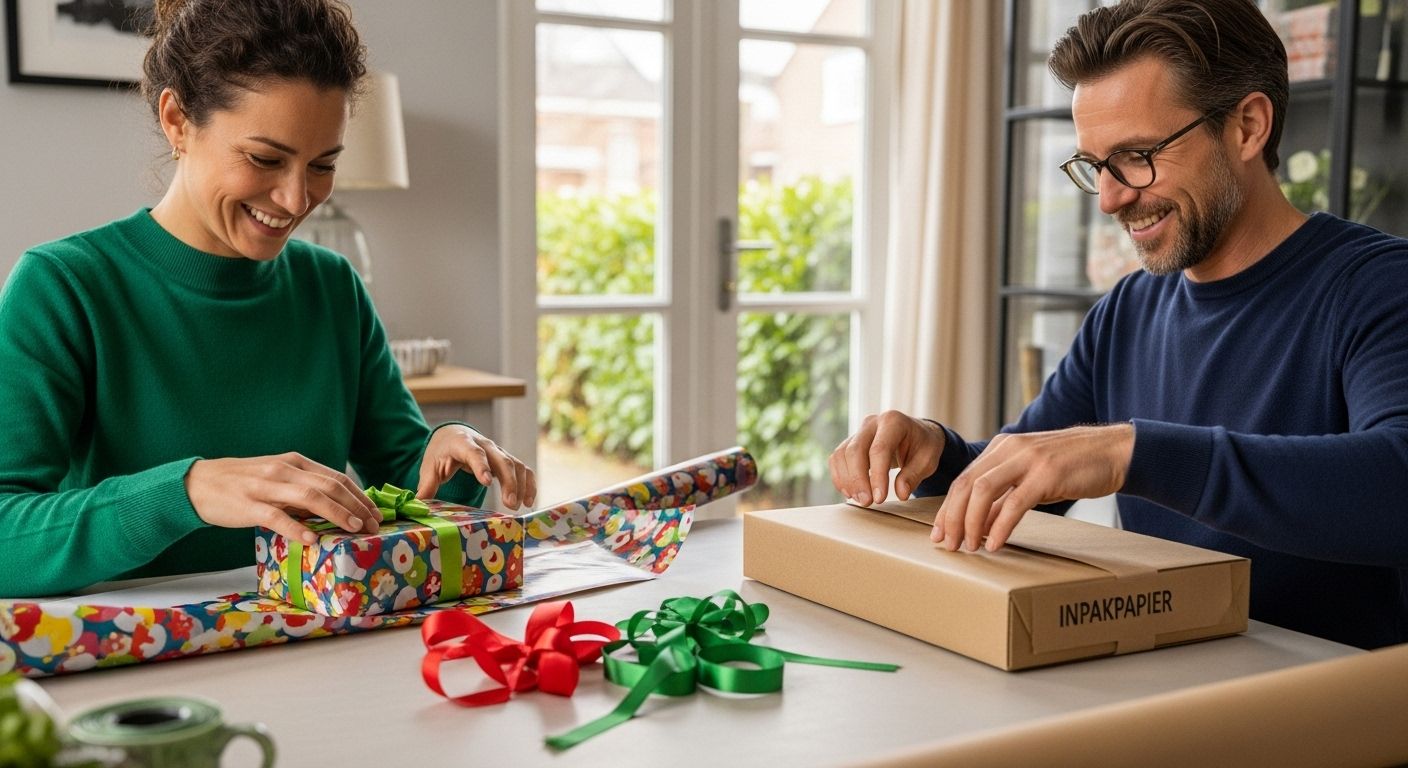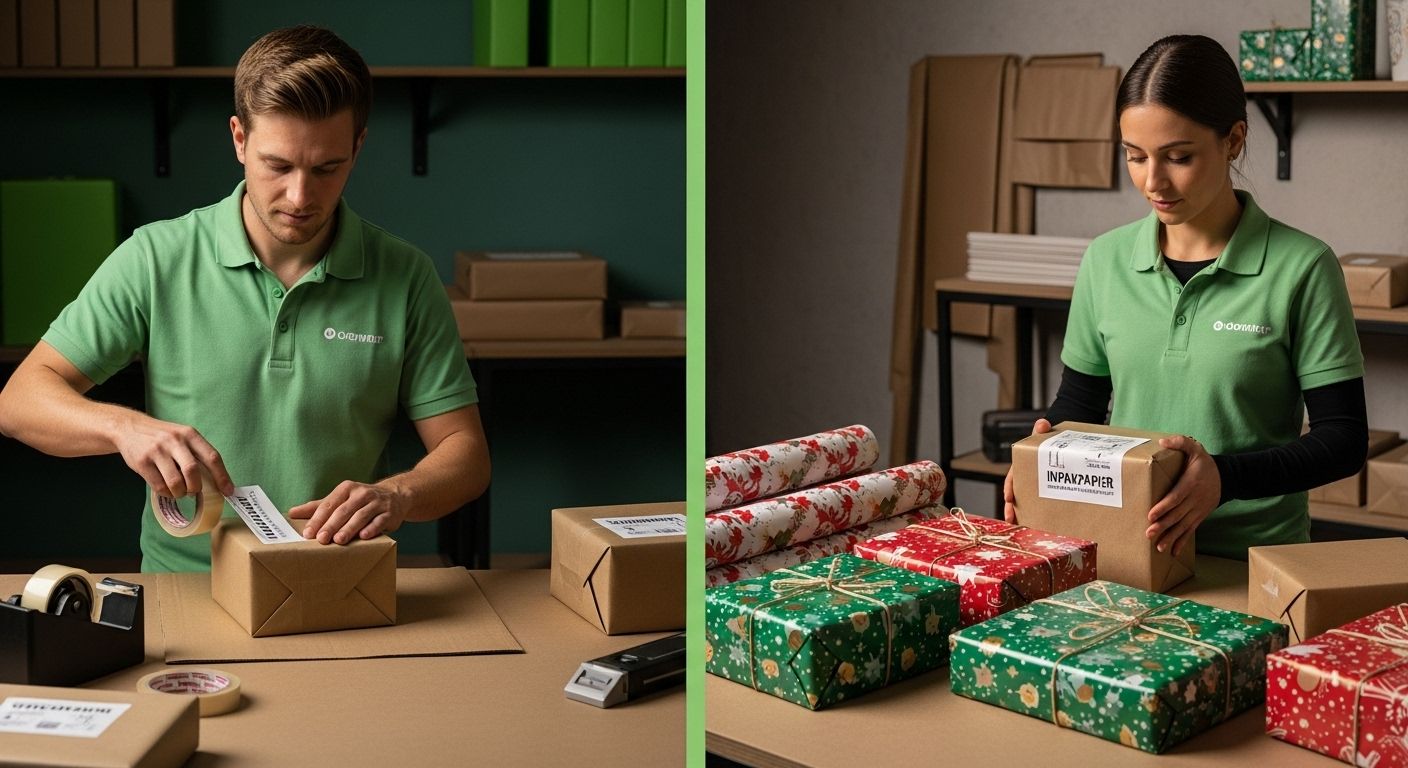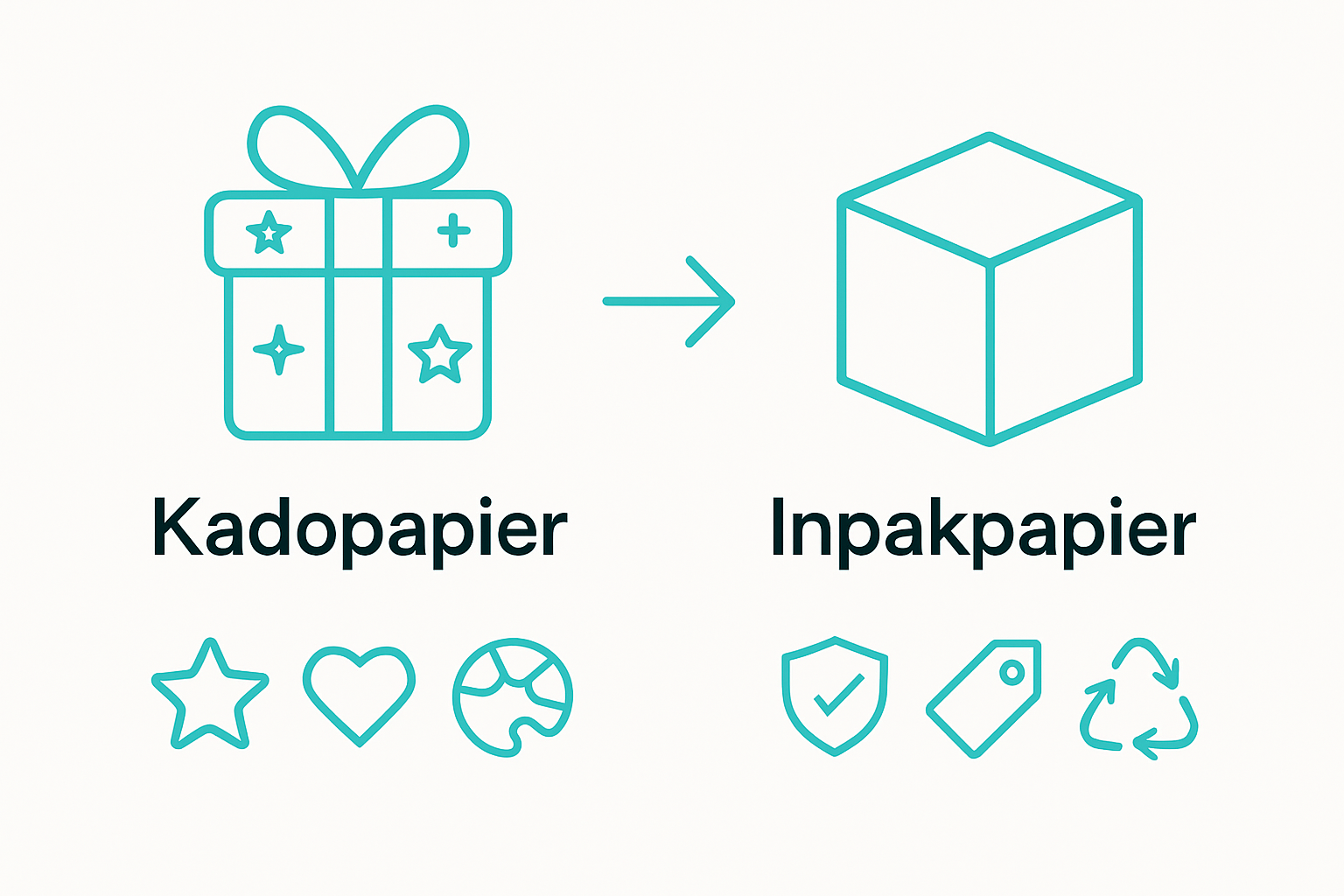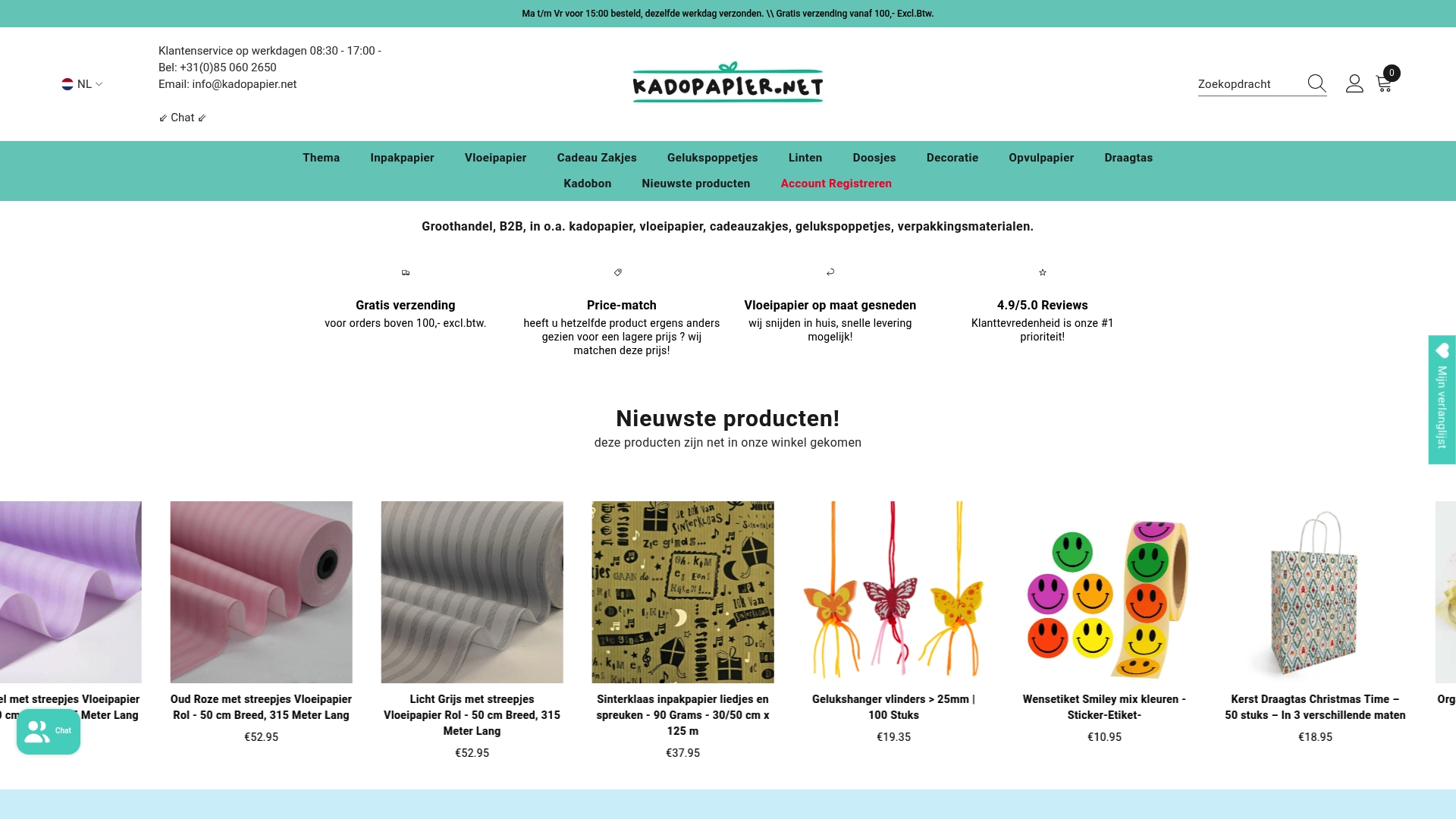The difference between gift wrapping paper and wrapping paper explained clearly

Everyone knows that moment when you give a gift. It's also about pleasing the eye, so many people choose cheerful wrapping paper with pretty patterns. Surprisingly , more than 60 percent of Dutch people automatically choose eye-catching wrapping paper, even for a simple gift . But did you know that regular wrapping paper is often stronger and more environmentally friendly? So, the choice between wrapping paper and gift wrap isn't as simple as it seems.
Table of contents
- What is wrapping paper?
- What is wrapping paper?
- Why is the difference important?
- How are wrapping paper and gift wrap used?
- What materials and designs are available?
Short Summary
| Take with you | Explanation |
|---|---|
| Wrapping paper creates emotional value | It is designed for a festive presentation, which increases expectations surrounding the gift. |
| Wrapping paper is practical and functional | It focuses on protection and efficiency, especially in industrial applications. |
| Choose paper based on the occasion | The choice of wrapping paper or gift wrapping paper depends on the type of event and the recipient. |
| Sustainability is gaining importance | When choosing paper, it is essential to consider environmental friendliness and reusability. |
| Various materials and designs available | Choose glossy, kraft, or recycled paper depending on the desired look and functionality. |
What is wrapping paper?
Wrapping paper is a special type of decorative paper specifically designed for wrapping gifts. It distinguishes itself from regular wrapping paper by its attractive appearance, often featuring unique designs, patterns, and finishes that make a gift extra festive and appealing.
The essence of wrapping paper
The primary purpose of wrapping paper isn't just to cover a gift, but also to create a sense of surprise and a first visual impression before the package is even opened. Cultural studies of gift wrapping show that the wrapping itself is part of the gift-giving experience, with the paper playing a significant role in the emotional value of a gift.
Wrapping paper has some unique features:
- Often made of high-quality, glossy or matte paper
- Available in numerous designs ranging from solid colors to complex patterns
- Specially developed to be folded neatly and tightly around a gift
Difference with standard wrapping paper
While standard wrapping paper is often functional and basic, gift wrap is meant to decorate and surprise. It's thicker, of higher quality, and designed to attract attention. Want to learn more about the differences between different types of wrapping paper? Read our guide to printed and plain wrapping paper .
When choosing wrapping paper, it's important to consider the occasion, the recipient, and the atmosphere you want to evoke. A birthday gift, for example, requires a different type of paper than a wedding gift or a Christmas present.
What is wrapping paper?
Wrapping paper is a versatile packaging solution essential for protecting, transporting, and presenting various items. It differs fundamentally from gift wrapping paper in its more practical and functional approach, focused on protection and efficiency.
Characteristics of wrapping paper
The primary function of wrapping paper is protection and packaging. Research into packaging materials shows that the material is typically made from wood pulp, which ensures robustness and durability.
Wrapping paper has some important properties:
- Available in various thicknesses and strengths
- Often made from kraft paper or recycled materials
- Suitable for both industrial and domestic use
Applications and diversity
Wrapping paper is used much more than just for gifts. It's used in numerous sectors, such as logistics, retail, the food industry, and crafts. Learn more about the various applications of wrapping paper , including how companies use it for brand identity and product packaging.
When choosing wrapping paper, it's important to consider your specific needs: some types are water-resistant, while others are extra durable for heavy products. The quality and thickness vary depending on the intended use, whether it's delicate shipping or robust packaging for industrial goods.

Why is the difference important?
The distinction between gift wrapping paper and wrapping paper goes beyond a simple difference in appearance. It touches on practical choices, emotional experiences, and sustainability issues that significantly impact how we package and present products.
The emotional dimension of packaging
Gift wrapping paper and wrapping paper fulfill fundamentally different psychological functions. Research on gift packaging shows that the way something is packaged can be just as important as the contents themselves. A beautifully wrapped gift heightens anticipation and emotional value, while functional wrapping paper primarily focuses on protection and efficiency.
Important considerations when choosing between gift wrapping paper and wrapping paper:
- Emotional impact versus practical functionality
- Cost and availability of materials
- Environmental considerations and sustainability
Practical and sustainable implications
The choice between wrapping paper and gift wrap also has broader implications. Wrapping paper is often less expensive and more suitable for large-scale packaging processes, while gift wrap is more focused on individual, personal presentation. Check out our tips for smart packaging choices to make informed decisions.

Moreover, sustainability is playing an increasingly important role. Reusable and recycled packaging materials are gaining popularity, making the choice between wrapping paper and gift wrap not only aesthetically but also environmentally relevant.
How are wrapping paper and gift wrap used?
The use of wrapping paper and gift wrapping paper differs fundamentally in context, application, and presentation. Both materials fulfill crucial roles in various sectors and personal situations, each with their own specific functionalities and aesthetic considerations.
Applications of wrapping paper
Wrapping paper is primarily used to create a festive and personal presentation. Sustainable wrapping is becoming increasingly popular, with an emphasis on both aesthetics and environmental awareness. It is often used for:
- Personal gifts for special occasions
- Decorative packaging for small, delicate items
- Creating a surprise and emotional experience
Applications of wrapping paper
Wrapping paper has a much broader and more practical range of uses. It's used in numerous industrial and commercial contexts where protection and efficiency are paramount. Discover creative wrapping techniques to explore the possibilities.
Main applications of wrapping paper include:
- Logistics and transport of goods
- Protection of products in retail and e-commerce
- Industrial packaging processes
- Protecting fragile or breakable items
The choice between gift wrapping paper and wrapping paper depends on the specific context, the purpose of the packaging, and the desired look. While gift wrapping paper focuses on the emotional experience, wrapping paper primarily focuses on functionality and protection.
To clarify the difference between gift wrap and wrapping paper, below is an overview of their key features and applications in a handy comparison table.
| Feature | Gift wrapping paper | Wrapping paper |
|---|---|---|
| Goal | Decorative, emotional experience | Protection, functionality |
| Appearance | Glossy/matte, striking designs | Plain, usually neutral |
| Material | High-quality paper, foil, kraft | Kraft paper, recycled, coated |
| Context of use | Gifts, festive occasions | Logistics, retail, industry |
| Sustainability | Sometimes recycled or reusable | Recycled and water resistant possible |
| Cost price | Often higher | Usually cheaper |
| Main function | Aesthetics and presentation | Protection and efficiency |
What materials and designs are available?
The world of wrapping paper and gift wrap is rich in materials, designs, and possibilities ranging from functional to decorative. Choosing the right material is crucial for both the protection and aesthetic presentation of products and gifts.
Materials for wrapping paper
Research into packaging materials reveals a wide range of available materials for wrapping paper. The most common types are:
- Glossy paper with a metallic finish
- Kraft paper with decorative prints
- Recycled paper with an environmentally friendly appearance
- Foil paper with glittering effects
Materials for wrapping paper
Wrapping paper is distinguished by its functionality and diversity. Discover our decorative accessories to give your packaging extra cachet. The most commonly used materials are:
- Kraft paper for robust protection
- Greaseproof paper for food products
- Coated paper for moisture resistance
- Antistatic paper for electronic devices
When selecting the right paper, factors such as weight, thickness, texture, and environmental friendliness play an important role. The trend is increasingly shifting toward sustainable and reusable materials that are both functional and decorative.
Below you'll find an overview table of the most commonly used materials and their characteristics for wrapping paper and gift wrap. This will help you choose the right type of paper for every occasion.
| Material type | Used for | Features | Environmental friendliness |
|---|---|---|---|
| Glossy paper | Gift wrapping paper | Luxurious appearance, metallic finish | Less environmentally friendly |
| Kraft paper | Both | Strong, natural, recyclable | Very environmentally friendly |
| Recycled paper | Both | Simple, eco-look | High, durable |
| Foil paper | Gift wrapping paper | Sparkling, eye-catching | Only limitedly recyclable |
| Greaseproof paper | Wrapping paper | Protects against moisture, food safe | Recycled possible |
| Coated paper | Wrapping paper | Moisture-resistant, smooth | Variable, depending on coating |
| Antistatic paper | Wrapping paper | Protects electronics | Can be sustainable |
Make the difference between gift wrapping paper and wrapping paper immediately visible
Choosing between wrapping paper and gift wrap can be tricky when you want to present your gift or product in a truly special way. You might recognize this: you want to make an impression, but you're wondering which paper is best suited to your occasion. This article has taught you what truly matters when making this choice.

Want to find the right materials for your personal or business projects right away? Discover Kadopapier.net 's wide selection of high-quality wrapping paper, creative gift wrap, and handy accessories. This way, you'll always create a professional and festive impression. Browse our current selection and choose what suits your style and goals. Don't wait any longer; start wrapping smartly and stylishly today.
Frequently Asked Questions
What is the main difference between wrapping paper and gift wrap?
Gift wrapping paper is specifically designed for decorative gift wrapping and focuses on aesthetics and emotional impact. Wrapping paper, on the other hand, has a more functional role and is primarily used for protection and efficiency when wrapping products.
When do you use gift paper and when do you use wrapping paper?
Wrapping paper is mainly used for personal gifts on special occasions, while wrapping paper is suitable for wider uses such as logistics, transportation and industrial packaging processes.
What materials are used for wrapping paper and gift wrap?
Gift wrapping paper is often made of high-quality paper with decorative designs, such as glossy or kraft paper, while wrapping paper is usually made of kraft paper, greaseproof paper, or coated paper for robust protection.
How does the choice between wrapping paper and gift wrap affect sustainability?
Gift wrapping paper and wrapping paper have different environmental impacts. Gift wrapping paper can often be recycled or made from renewable materials, while wrapping paper also offers options such as recycled and waterproof paper. The choice depends on your specific needs and sustainability goals.
